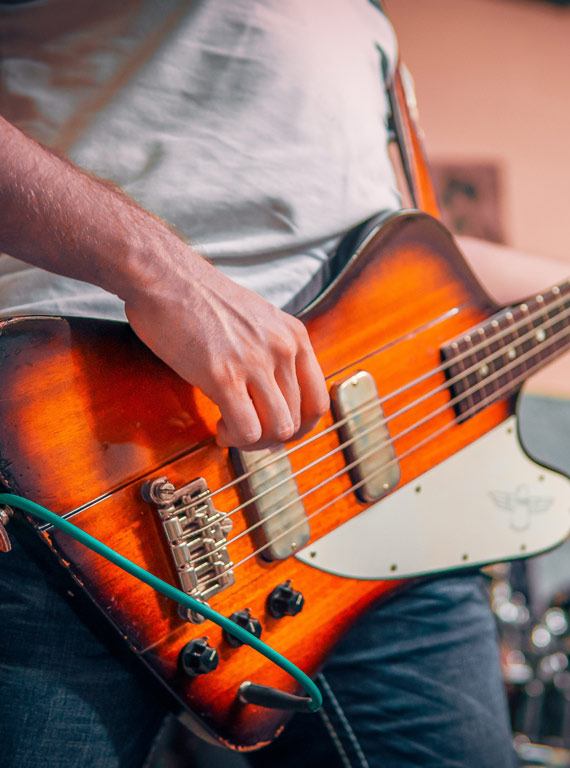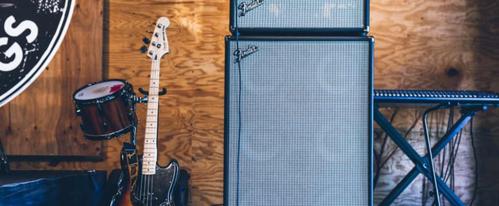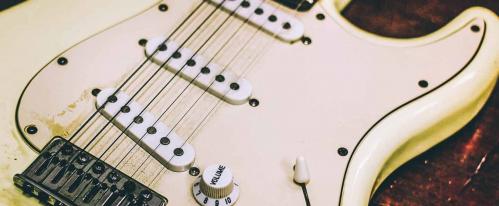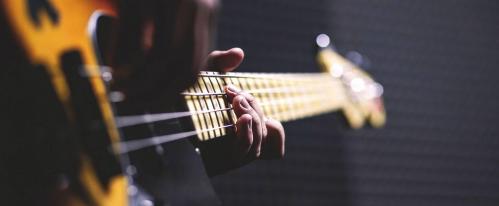We take a look at 16 essential (and very easy) bass guitar setup techniques, bass guitar modifications & bass guitar upgrades that you can do yourself without spending a fortune!
If you've got a bass guitar that you absolutely love, but can't really get along with or don't enjoy playing, then you should really consider making a few small, but very important bass guitar setup modifications. Fortunately, you can do a lot yourself on a budget! making a bass mod or bass upgrade has never been easier!
Playability is extremely important when it comes to any bass guitar. It's important that you actually LIKE the bass guitar you're playing. The more invested you are in your bass emotionally and physically, the better you'll play it and thus your music will sound better.
If you've got a tired old bass guitar that you know in your heart has more to give, we thoroughly recommend learning how to make a few modifications to your bass guitar to get the best out of it.
We've put together a list of some simple bass guitar modifications and setup tips that will breathe new life into your bass and help you rekindle your love for that old bass guitar you know you should be playing more.
Show me the 16 best setup, bass mods & bass upgrade tips
In this blog we're going to discuss the following useful bass guitar mods and bass guitar upgrades:
- Lubricating the nut
- Filing Or Replacing The Nut
- New tuners
- Intonation
- Changing the scratchplate
- Installing a Thumb Rest or Pull bar
- Changing the pickups
- Changing the bridge
- Adding straplocks
- Getting a new strap
- Fret levels filed down
- Having the action lowered
- Changing your strings
- Using tone pots correctly
- Replacing tone pots
- Having your bass set up by a professional
1. Lubricate The Nut
One of the most important improvements you should make to your bass guitar is to lubricate your bass guitar nut. Tuning stability is key when it comes to bass guitars and one of the main factors that improves these things is the way your nut interacts (or doesn't) with your strings.
Simply add some graphite to the nut on your bass guitar next time you change strings. This will encourage positive friction and allows the string to move correctly in the grooves of the nut. This ensures the string doesn't get stuck when you're tuning up or bending strings.
Simply use a little graphite, found in a lead pencil and add it to the grooves of the nut. Just "draw" some lines in the grooves to add the graphite and watch how your tuning stability and resonance is improved.
This is a cheap bass mod you can make for the price of a pencil!
Simple changes to the nut like adding a graphite lubricant or in some cases widening or deepening the string slots can have a profound effect on sound, tuning and playability.
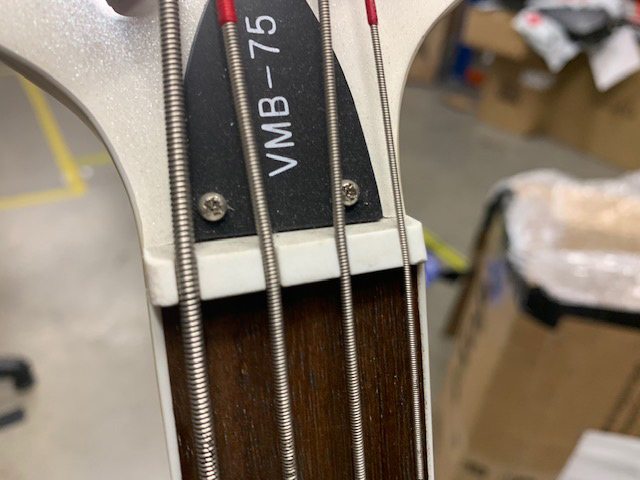
2. File The Nut Or Replace Your Nut
There are two options here should the graphite trick not work. Chances are it will, but if the nut is not allowing the string to move correctly you can file the string grooves to ensure the strings fit correctly. There are specific nut filing tools you can use to file the grooves down a touch and widen them so the string moves and resonates correctly.
Simply insert the nut file and make 3 to 4 light-handed sweeps, this will take off a small amount of material and allow the string to sit in the nut correctly.
Make sure you only do 3 to 4 sweeps at a time, as you may have to replace the nut should you file the string grooves down too far.
If that doesn't work, then you could consider replacing the nut altogether. Bone nuts are the industry standard and help with resonance and tuning stability. So if all else fails, you could replace the nut. This will have a massive effect on tuning stability and resonance - not to be overlooked!
3. New Tuners
Cheap tuning pegs can be disastrous for bass players. Due to the amount of tension bass strings are under, you need a set of reliable tuners that can handle bass strings and the demands of a musician such as yourself.
Stock tuners found on bass guitars from reputable brands today will easily do the job. But the more expensive you go, the better quality tuning and reliability you get. A set of locking tuners are ideal, or if you're always using a drop D tuning, get a hipshot bass tuning pegs that can handle that change correctly.
When you replace old, tired tuners, you'll often notice your bass guitar stays in tune for longer and is more reliable when you need it most.
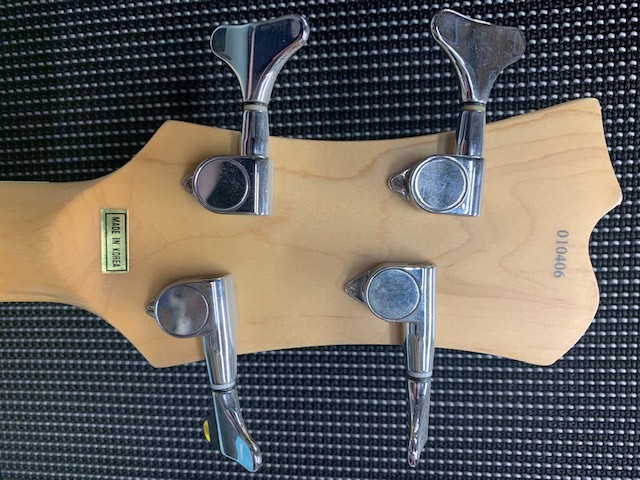
4. Adjust The Intonation
Checking the intonation on a guitar or bass guitar basically means checking that the string is in tune right across the fretboard.
A sign that your guitar has intonation issues is when it sounds in tune when you play closer to the headstock, but sounds slightly out of tune the closer you get to the body of the bass.
A simple way of checking the intonation is playing an open note, then playing a note on the 12th fret. Use a tuner to see how out of tune the 12th fret is. If it's out, you need to adjust intonation.
You can simply adjust the saddles forward or back to make sure the bass is in tune right across the fretboard.
Be aware though, that a guitar is made of wood, so is responsive to changes in temperature and no guitar out there is exactly spot on across the fretboard ALL of the time. Identify the string which has issues and move the saddle in small increments.
A simple, easy bass guitar setup modification anyone can do.
5. Change The Scratchplate
Something as simple as an aesthetic or visual change to your bass can make a world of difference.
Changing the scratchplate is an easy bass guitar modification that you can do yourself.
A pickgurad change on a bass guitar can breathe new life into your instrument. If you're not happy with the colour of your bass guitar pickguard, change it! It's a simple change that might help you enjoy your bass more.
6. Installing a Thumb Rest or Pull bar
If you're a finger style bass player, your hand is going to get tired! So adding a thumb rest onto the pickguard can really benefit your playing.
So what are the benefits of having a thumb rest on a bass?
Well, a thumb rest allows you to keep your hand in a steady position and let your fingers pluck the strings, or walk the strings correctly. You can also mute strings easier and enjoy better playing dynamics.
You can essentially pull the strings directly up towards you allowing each note to resonate for longer, too. Which is ideal!
It's a simple bass modification that requires no knowledge of bass guitar setups and can be added for a very small price.
A finger rest otherwise known as a pull bar, which is the one found underneath the strings allows you to pull harder on the strings with your thumb when you need that extra pop. So if your hand is getting tired, try them out!
A vintage-style thumb rest like this which for use on Precision Bass and Jazz Bass models allows you to rest your thumb whilst you finger pick.
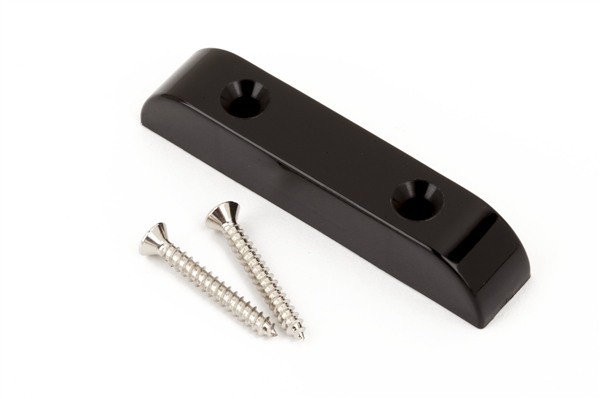
7. Change The Pickups
Usually when we get fed up with a bass guitar, it's because the sound is lacking something. Whether it's power, punch or versatility, the problem usually lies within the pickups.
One of the best bass guitar mods you can make is to change the pickups. Now this can be as costly or as cheap as you want, it all depends on how much you're willing to spend.
You can either buy a 2nd hand bass and swap the pickups or go for aftermarket pickups from the likes of Fender, Seymour Duncan or Dimarzio.
Changing pickups just requires a little soldering and some patience to ensure you're wiring it up correctly. However, we recommend taking it to a guitar tech if you're inexperienced.
If you want a more pronounced punch in your single coil, a set of Fender pickups might do the trick. If you need something for metal, then a set of EMG's are ideal. Or perhaps you want to throw a humbucking pickup in your Jazz bass - the possibilities are endless.
8. Change the Bridge
Changing the bridge on a bass guitar can often improve resonance and tuning stability. You rarely have to change a bridge out, but there are companies out there who specialise in bass guitar bridges.
A good quality bridge will add tuning stability, resonance and stop strings from slipping out of the saddle. They can also stop strings from sounding 'dead' which is often a problem with poor quality bridges.
Often a new bridge will seriously bring your bass guitar back to life by adding extra sustain and tuning reliability.
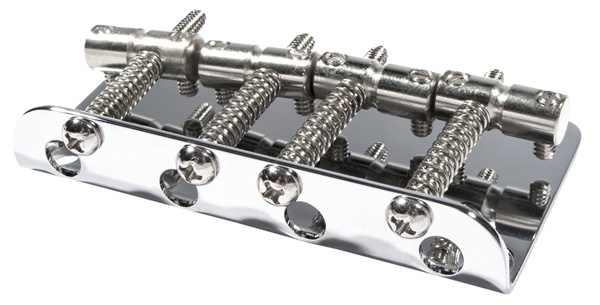
9. Add Strap Locks
A set of strap locks are essential for bass guitarists, and one of the easiest bass modifications you can make without a setup.
Strap locks are designed to stop your guitar strap from falling off your bass guitar, so you're free to jump and move around as much you want without fear of dropping your instrument.
One side attaches to the bass guitar, and the other attaches to the strap. The locking mechanism holds them together, so you're ready for the most active of gigs.
Schaller strap locks are the industry standard options, but Fender also makes good quality options too. We highly recommend making this modification as it drastically reduces the chance of dropping your bass.
Regular strap pins are not designed to withstand heavy use, so adding a set of straplocks or even a set of rubber rings around the strap locks will secure the strap in place.
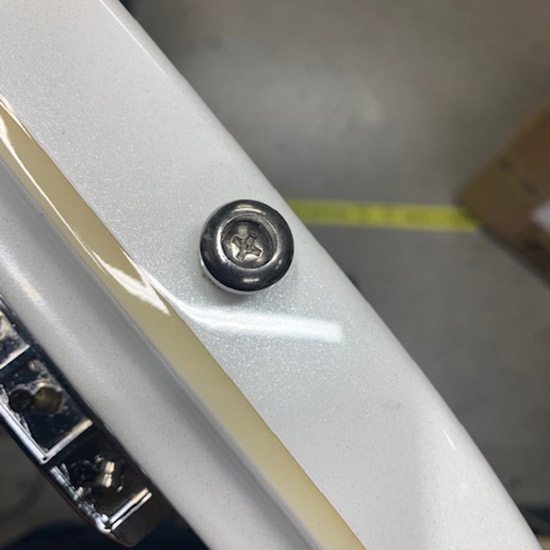
10. A new strap
Bass guitars are heavy, so you need a strap that is comfortable on your shoulder. The more comfortable you are the more you'll enjoy your playing session.
So invest in a quality, comfortable bass guitar strap and you're going to feel better when playing, and play better as a result. A simple, but often overlooked bass modification and bass setup tip that makes a massive difference.
If you want the best of both worlds i.e. a new strap and a set of straplocks, but don't want to remove your existing strap buttons, the Daddario Auto Lock Guitar Strap Black is a great option. This fits over your existing strap button and secures the strap to your guitar so there's almost zero chance of dropping your guitar !
11. File Your Fret Levels Down
On rare occasions, a bass guitar may have uneven fret levels. This will cause your notes to be dead in certain places on the fretboard.
Filing the fret levels down is an inexpensive bass modification that you can do your self. Just find the offending fret wire and use a fine file to gently level it out. Again, just do 3-4 sweeps at a time, as you don't want to file it down too much and cause more problems.
If you don't feel comfortable doing it, take it to a luthier for a guitar set up.
12. Adjust the action
Having the action lowered or heightened on a bass is a great way to improve playability. If your strings are too high, your bass might be difficult to play. If they are too low, they might buzz.
This is a simple bass setup modification that you can do yourself by simply raising or lowering the string saddles on the bridge with the correct Allen key. Just small turns at a time will do the trick.
13. Change Your Strings
It's important to get the right bass strings for your bass. This is integral to your sound. But you need to ensure you're playing the right strings as it can mean the difference between enjoying your playing experience and LOVING it.
Almost all bass guitars will come with roundwound medium strings with a gauge of . 045/. 065/. 085/. 105, but if you like more punch to your sound, you should consider a lighter set.
If you like a darker boomy sound, then a set of Heavy or Extra Heavy strings are a great choice.
If you like that Beatles style sound, a set of Flatwound strings are also a great way of adding a certain flair to your sound.
We recommend experimenting with different sets of strings as they will give you taste of different sounds and a different playing experience.
Play as much as you can and try as many sets of strings as you can and you'll slowly figure out what you like.
Check out a full range of Bass Guitar Strings here.
14. Using Your Tone Pots Correctly
A lot of new bass players think that your volume and tone pots should be on full all the time. But they're missing out on a variety of sounds.
Try and roll back your tone pot for a boomy sound, or turn it up for a punchier sound. If you have two pickups, try and roll back one of the volume pots and see which pickup you prefer to stand out in the mix.
Experiment with your volume and tone, chances are the sound you want is already in your bass guitar!
Installing better tone and volume pots is an essential bass guitar mod for those who want the best out of their tone.
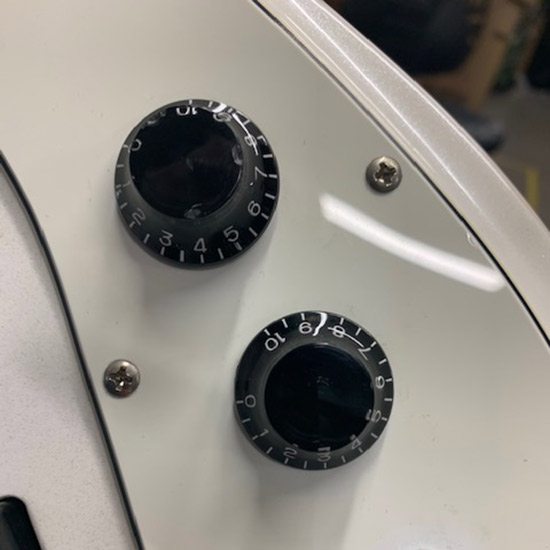
15. Replace Your Tone Pots
If you're finding your tone and volume pots not responding correctly to your changes, it might be time to change the pots. If they're crackling, you might just need some contact cleaner, however if there are no dynamics when you're riding your volume pot or changing the tone, then you should look at changing them.
You want the volume to be able to swell and you want the tone to respond correctly and allow you to increase treble and bass otherwise you're missing out on a lot of versatility.
A new set of tone pots will allow you to take full control of your bass guitar and get the best out of it.
The likes of the 500K potentiometer pictured is ideal for use as volume or tone control on nearly all U.S. and Mexico-made Fender instruments with solid-shaft potentiometers. If you've got an old Fender bass that doesn't offer a great deal of control, this will help you take that control back.
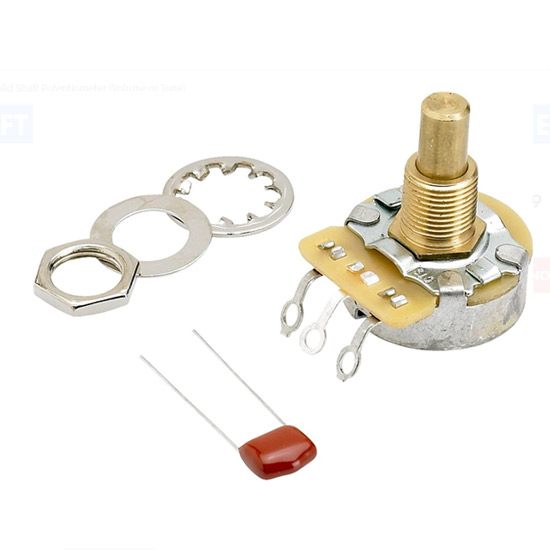
16. Get A Professional Set Up
And finally we'd always recommend getting a professional set up. If you're not comfortable making any changes to your instrument on your own, then a luthier or guitar tech can do it for you.
A good guitar or bass tech can breathe new life into your bass guitar and change an average performing bass into something that you can't stop playing.
As we stated in our guitar mods blog, instruments are subject to humidity and temperature changes when they travel from their destination, so would always benefit from a set up.
If you're finding that your bass guitar is not quite 'right' when you play it, hand it over to an experienced bass tech and see how they can improve it for you. It could be something simple that will make all the difference!
Fortunately, your local PMT store has dedicated bass guitar technicians ready to help you make the right bass guitar modifications you need. Whether you need a bass guitar setup, a new scratchplate fitted or a set of pickups installed, we can either do that for you or locate the perfect bass guitar tech to help you.
Find your local PMT store and get your bass guitar setup today or contact us on 0151 448 2089 to discuss your bass guitar modifications! You can also read our blog on guitar and bass setup costs.

